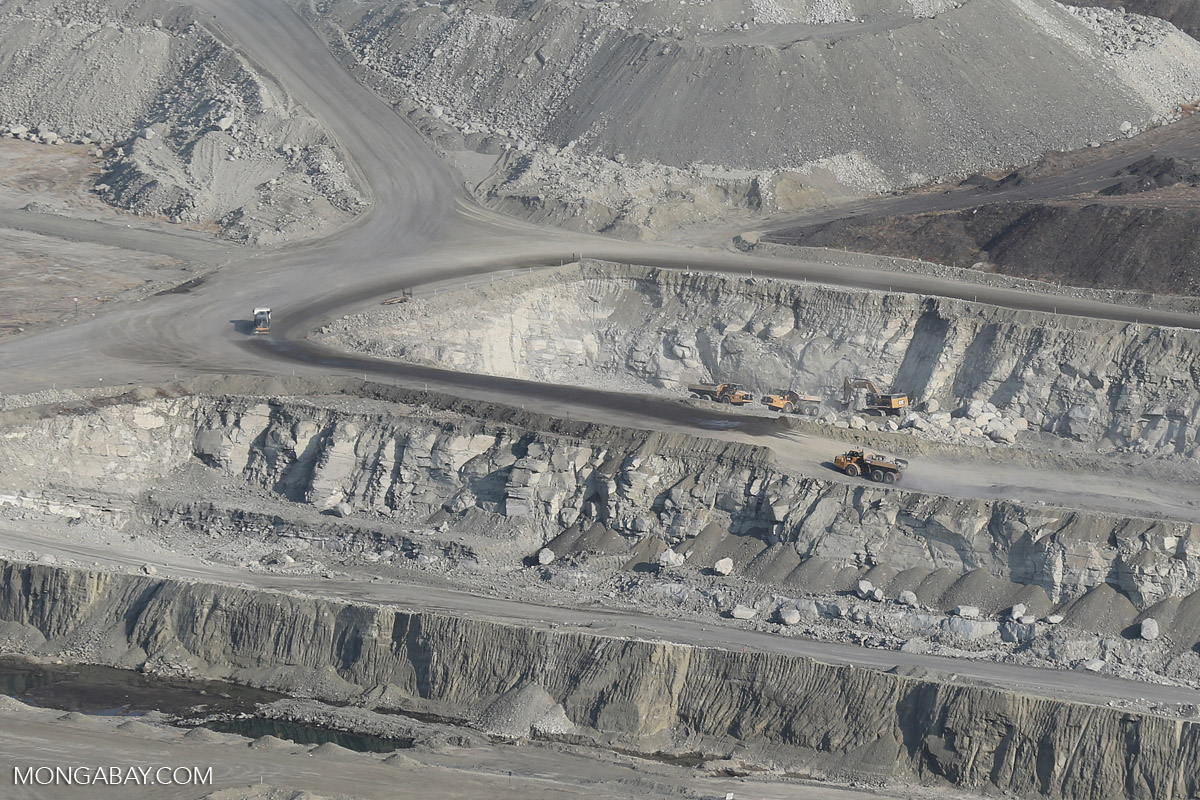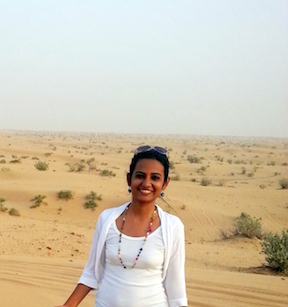- Miners were 10 times more likely to die of traffic-related injuries than people who did not work in mining, a study that looked at Tanzania’s two biggest gold mines found.
- Africa has a third of the global stock of metals and minerals and hosts around 700 active large-scale mining sites, with more in the pipeline as the world’s appetite for these resources grows.
- Of the 186 people of working age who died in five wards around the two mines in a year, about half were miners, reflecting the higher risks miners faced, especially men.
- The study authors say that interventions should be designed to prevent road injuries in the wider community, not just at the mine sites, and the definition of safety in mining areas needs to be broader.
Mining areas are dangerous for many reasons: they’re linked to a heightened risk of cancer, poisoning, heart and respiratory diseases. Now, researchers have identified a hitherto overlooked hazard: roads.
Miners were 10 times more likely to die of traffic-related injuries than people who did not work in mining, according to a new study of Tanzania’s gold mines published in PLOS Global Public Health.
“We are not paying attention to road injury, but it is indeed a leading cause of death in these communities,” said Isaac Lyatuu, a public health specialist at Ifakara Health Institute in Dar es Salaam and first author of the paper. Focusing on the wider region rather than just the extraction zone is important to fully map the imprint of these operations, he said.
Africa has a third of the global stock of metals and minerals and hosts around 700 active large-scale mining sites. Modern technologies — from mobile phones that use cobalt, to lithium-ion batteries — are fueling the expansion of extractive activity on the continent.
Gold mining is big in Tanzania, accounting for nearly 90% of the East African nation’s mineral exports. The major importers of this gold are India, the United Arab Emirates and Switzerland.

Researchers tracked deaths in communities that live in the shadow of Tanzania’s two largest gold mines, located in the north of the country. South Africa-based AngloGold Ashanti owns the Geita gold mine in the eponymously named region, and Toronto-headquartered Barrick Gold Corporation controls the Bulyanhulu gold mine in the Shinyanga region.
Industrial mining operations are disruptive, rearranging the economic and social landscape of surrounding areas. How they influence people’s health is not always fully understood. Mortality studies that use only medical records have limitations.
“If you look at these mining areas from the perspective of health facility visits, what will come up often is things like cancer, HIV or other infectious diseases,” Lyatuu said.
Many deaths in Tanzania, unlike in countries like the U.S., happen outside the formal health care system. Family members may decide not to seek death certificates for dead loved ones, especially in rural areas where it can be time-consuming and costly.
Deaths records are necessarily incomplete.
So, the investigators went about gathering information the old-fashioned way: by talking to people. Verbal autopsies, where surveyors conduct structured interviews with family members and caregivers, are standard tools for gathering mortality statistics. They distill the narrations into data that trained physicians study to determine the cause of death.
For the Tanzanian study, surveyors tracked down fatalities in five wards around the mines, home to a total of 134,000 residents. In one year, they recorded nearly 350 deaths, of which 210 were men.
About a third of the working-age population in these wards was engaged in mining activities. But of the 186 people of working age who died, about half were miners, reflecting the higher risks miners faced compared to others in the community.
Most of the additional risk is from traffic-related injuries, and men were the most likely to die in such accidents.
Another study co-authored by Lyatuu shed light on community perceptions of mining operations in Tanzania, Burkina Faso, Ghana and Mozambique. The overall opinion was that mines harmed people, in particular, by polluting the environment, redefining livelihoods, and through societal changes. On the other hand, these projects also bolstered well-being through improved health care facilities, schools, water access and road construction.
This research highlighted the complex ways in which mining investments shape lives in and around the concessions.
However, data from the new study suggests that threats to life intensify in mining regions. Interventions are often narrowly focused on mining sites themselves and restricted in scope to things like mining gear, safety equipment, fire prevention measures and on-site road safety.

There is good reason for this. “Mine-related road transport is a potentially high-risk on-site activity particularly due to factors including the size differential in vehicles, the changing nature of the road environment, and the 24/7 operating nature of the industry,” said David McTiernan, a transport safety expert at the Australian Road Research Board (ARRB), a private research body that has clients in Australia, Canada and South America.
But these dangers spill into the chaotic environs outside mining concessions, too. “Increased off-site road transport activity can adversely impact mineworkers who regularly travel to and from the mine,” McTiernan told Mongabay in an email. “It can also impact the local communities living along the roads connecting mines to their supporting industries such as camps, processing plants, and ports.”
Some problems are particular to developing countries like Tanzania, where mining sites often create islands of prosperity and infrastructure development that is not apace with the rest of the country. Many of the accidents documented in the new study involved motorcycles. The increase in population and rising incomes changes the mix of vehicles on the road and increases traffic volume. Road safety infrastructure like traffic lights, pedestrian crossings and barriers aren’t always in place, nor is awareness.

Francis Mbilima with the UNDP in Africa said his findings from mines in Zambia backed the idea that road safety is a major concern. “Community safety education is key,” he said. “It includes routine community sensitization roadshows and meetings. With the expansion of social media and community radios, this task is even easier.”
Mbilima described how at the Lumwana mine in Zambia, another Barrick Gold undertaking, fatalities from road incidents fell from 23 in 2012 to nine in 2015 owing mainly to community safety initiatives and investments by the mines. “These are not one-off investments but better done within the broader national road safety standards, strategy and initiatives,” he said.
Barrick Gold did not respond to Mongabay’s attempts to seek comment about the findings from Tanzania.
Chris Nthite, a spokesperson for AngloGold Ashanti, said that the Geita Gold Mine has “developed and implemented several controls aimed at mitigating the hazard of road traffic accidents beyond the mine’s concession.” He added in an emailed response that these controls applied to the company’s own vehicle fleet and travel.
“While GGM [Geita Gold Mining] co-operates with traffic authorities, it has no control over privately owned vehicles and employees traveling in their private capacity, which is the responsibility of local road-traffic authorities,” Nthite said.
The researchers shared their results with Tanzanian health authorities and held preliminary meetings with the mining companies. They plan to engage further with the companies to help design interventions at the two mining sites.
“This work should be considered a starting point, there is much to be learned from investigating the road accidents,” McTiernan said, adding that this includes probing where accidents happen, what kind of vehicles are involved, and who is killed.
Lyatuu echoed this need to examine road safety around the two mines. He said it was equally crucial for health impact assessments to be an integral part of how mining proposals are evaluated and that the definition of health and safety needs to be broader. “Companies should be concerned about what happens beyond the mine gates,” he said.
Citations:
Lyatuu, I., Winkler, M. S., Loss, G., Farnham, A., Dietler, D., & Fink, G. (2021). Estimating the mortality burden of large scale mining projects—Evidence from a prospective mortality surveillance study in Tanzania. PLOS Global Public Health, 1(10). doi:10.1371/journal.pgph.0000008
Leuenberger, A., Winkler, M. S., Cambaco, O., Cossa, H., Kihwele, F., Lyatuu, I., … Munguambe, K. (2021). Health impacts of industrial mining on surrounding communities: Local perspectives from three sub-Saharan African countries. PLOS ONE, 16(6). doi:10.1371/journal. pone.0252433
Mbilima, Francis. (2019). Extractive industries and local sustainable development in Zambia: The case of corporate social responsibility of selected metal mines. Resources Policy. doi:101441. 10.1016/j.resourpol.2019.101441
(Banner Image: A road near a mining site in Tanzania. Image courtesy of Isaac Lyatuu.)
Malavika Vyawahare is a staff writer for Mongabay. Find her on Twitter: @MalavikaVy
FEEDBACK: Use this form to send a message to the author of this post. If you want to post a public comment, you can do that at the bottom of the page.














